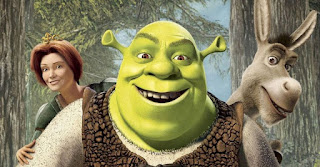Translating between the lines - Subtitles vs. dubbing in Polish language version of Shrek
There are many challenges when it comes to translation of films. It can be especially problematic if the dialogues include many cultural references, idioms or humor which can differ greatly across languages and cultures. This often means that there might be multiple approaches to translating such pieces. On one hand, the original meaning should be kept. On the other hand, the dialogues should be understandable and relevant to the audience watching the movie with dubbing or subtitles and this is where a lot of differences appear. These can be seen very clearly in the Polish translation of the film Shrek.
Shrek (part one) is an animated film from 2001 originally released in English language. It became a great success and its popularity quickly spread across the world. It has been translated, dubbed and premiered in Polish cinemas in June 2001. Currently, Shrek is available on Polish Netflix where viewers can choose to watch it with the original audio with subtitles or with Polish dubbing. However, these two versions differ in a lot of aspects. Subtitles seem to be more ‘flat’ and often fail to acknowledge that some references might not be understood when translated into Polish literally.
The first example of such reference appears during the interrogation of Gingerbread Man when he mentions a character called the Muffin Man. This is a reference to an English nursery rhyme which is not popular in Poland. In the subtitles the viewer see ‘Pan Pączek’. What is Pączek?
Retrieved from: https://wszystkoojedzeniu.pl/paczek-kalorie-kcal/
Pączek is a Polish type of round deep-fried doughnut. It does seem more familiar to the Polish audience and it is really delicious. However, the reference is lost.
Retrieved from https://zszywka.pl/p/zwirek-i-muchomorek-23633062.html
In dubbing, the Muffin Man has been translated to ‘Żwirek’ which has nothing to do with sweet pastry, but it is a reference to a character from “Fairy Tales of Moss and Fern”, a Czech series very popular and well-known in Poland. This is not the same reference that appeared in the original but it performs the same function.
When Shrek gets annoyed with Donkey’s humming, in the original we hear:
“All right, you're going the right way for a smacked bottom.”
In Polish subtitles this has been translated into
“Dochrapiesz się klapsa.”
which is close to a literal translation from English; however, “dochrapać się” is a phrase that is hardly ever used. 'Klaps' is also a word that might not be the most appropriate as it usually refers to describe physical punishment for a child but is also sometimes strangely used in sexual context. It does not seem to add any humor to the situation, it just seems odd. The translation does not change what the intention was, in both cases it was a threat, however, the subtitles seem unnatural.
On the other hand, in the dubbing, that phrase has been translated into
“Słuchaj, jeszcze chwila i otworzę wytwórnię salami.”
which can be translated into English as:
“Listen, one more moment and I’ll open a salami factory.”.
Shrek is a movie full of references and humor. Some of these references are universally known and will be understood in most countries but this might not always be the case. These examples show that in film translation, it is often not enough to simply replace English words with their Polish substitutes and make the sentences grammatically correct to make a good translation. The cross-cultural variations have to be taken into account to make sure the real meaning behind the dialogue has not been lost or altered. It is crucial to look at how it will be understood by the audience and if that aligns with the original intentions.
by Paulina








Comments
Post a Comment